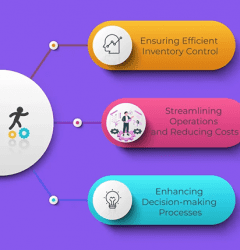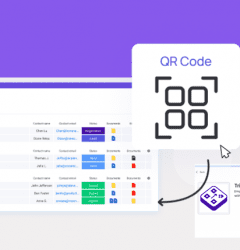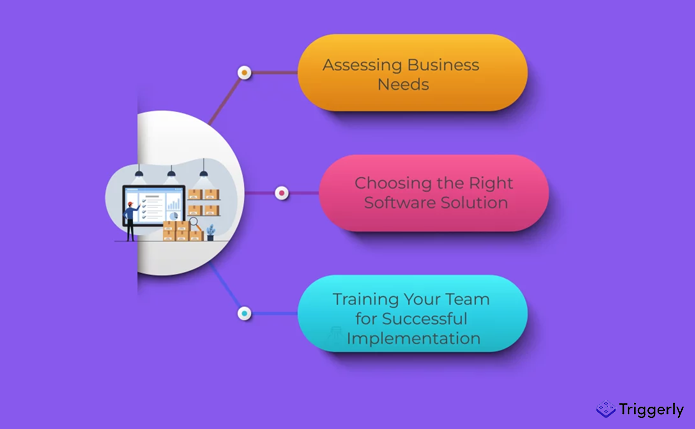
Importance of Inventory Management Software
Proper inventory management is essential for a business to succeed. Properly managing inventory minimizes costs, optimizes operations, and enhances customer service. Implementing inventory management software is a powerful way to streamline these processes. This article delves into the significance of inventory management software and the key benefits it provides to businesses.
Enhancing Operations with Automation
Inventory management software automates numerous tasks involved in inventory control. By integrating with systems like point-of-sale (POS) and e-commerce platforms, it facilitates real-time tracking of inventory levels. This automation reduces the need for manual data entry, thereby minimizing errors and discrepancies. With inventory management software, businesses can efficiently manage stock levels, streamline order processing, and automate replenishment, leading to enhanced operational efficiency.
Improving Accuracy in Inventory Tracking
Accurate inventory tracking is vital for businesses to maintain visibility over their stock levels. Inventory management software utilizes technologies like QR codes, barcode scanning, RFID, or serial number tracking to ensure precise, real-time inventory data. This accuracy helps businesses make informed decisions about stock replenishment, preventing stockouts or overstocking. By optimizing the supply chain, reducing carrying costs, and boosting profitability, accurate inventory tracking proves to be invaluable.
Supporting Decision-Making with Real-Time Data
Inventory management software provides businesses with real-time data and detailed analytics on their inventory. This data includes information on stock levels, sales trends, order history, and supplier performance. Access to real-time data enables businesses to make informed decisions on purchasing, pricing, and stock allocation. Identifying slow-moving or obsolete items, analyzing demand patterns, and adjusting inventory strategies accordingly become much easier, fostering growth and profitability.
Key Benefits of Inventory Management Software

Cost Reduction and Increased Efficiency
Inventory management software helps businesses cut costs and operate more efficiently. Accurate inventory tracking prevents stockouts and overstocking, minimizing the costs associated with excess inventory or lost sales due to insufficient stock. Automated processes, such as generating purchase orders and tracking supplier performance, streamline operations and reduce manual errors. By optimizing inventory levels and improving operational efficiency, businesses can achieve significant cost savings and enhance profitability.
Preventing Stockouts and Overstocking
Both stockouts and overstocking can have serious consequences for businesses. Stockouts lead to lost sales, unhappy customers, and harm to the company’s reputation. On the other hand, overstocking ties up capital, raises storage costs, and increases the risk of inventory becoming obsolete. Inventory management software addresses these issues by offering real-time visibility into inventory levels and demand patterns. This allows businesses to establish automatic reorder points, accurately forecast demand, and maintain optimal stock levels.
Boosting Customer Satisfaction with Timely Deliveries
Timely and reliable order fulfillment is key to customer satisfaction. Inventory management software enables businesses to track inventory accurately, manage order processing, and meet customer demands promptly. Real-time inventory data allows businesses to quickly identify available stock, allocate it to orders efficiently, and provide accurate delivery estimates. This capability enhances customer satisfaction, builds loyalty, and provides a competitive edge in the market.
Implementing Inventory Management Software
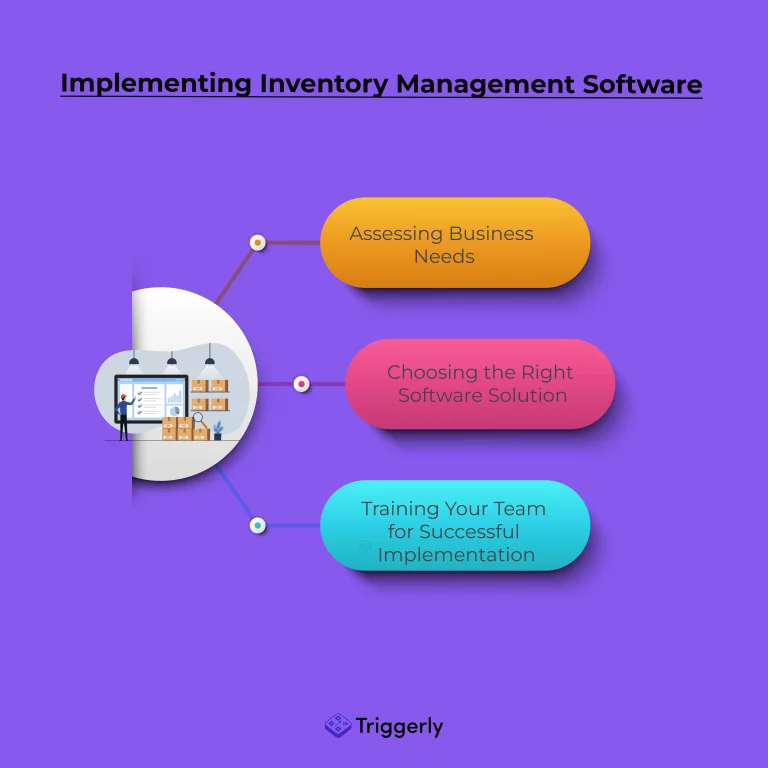
Assessing Business Needs
Before selecting an inventory management software solution, it is essential to assess your business needs. Identify inventory management challenges, evaluate current processes, and define goals and requirements. Consider factors such as business size, industry, number of SKUs, and required integrations with other systems. Understanding your specific needs helps in selecting a suitable software solution.
Choosing the Right Software Solution
Thorough research on available inventory management software options is crucial. Look for features and capabilities that meet your requirements, such as ease of use, scalability, customization options, compatibility with existing systems, and customer support. Reading reviews, comparing pricing models, and requesting demos or trials can aid in making an informed decision.
Training Your Team for Successful Implementation
Successful implementation requires proper training for your team. Ensure that employees are well-trained to use the software effectively. Many providers offer training resources such as documentation, tutorials, and webinars. Training your team on navigating the software, performing essential tasks like stock counting and order processing, and generating reports ensures a smooth transition and maximizes the software’s value.
Optimizing the Use of Inventory Management Software
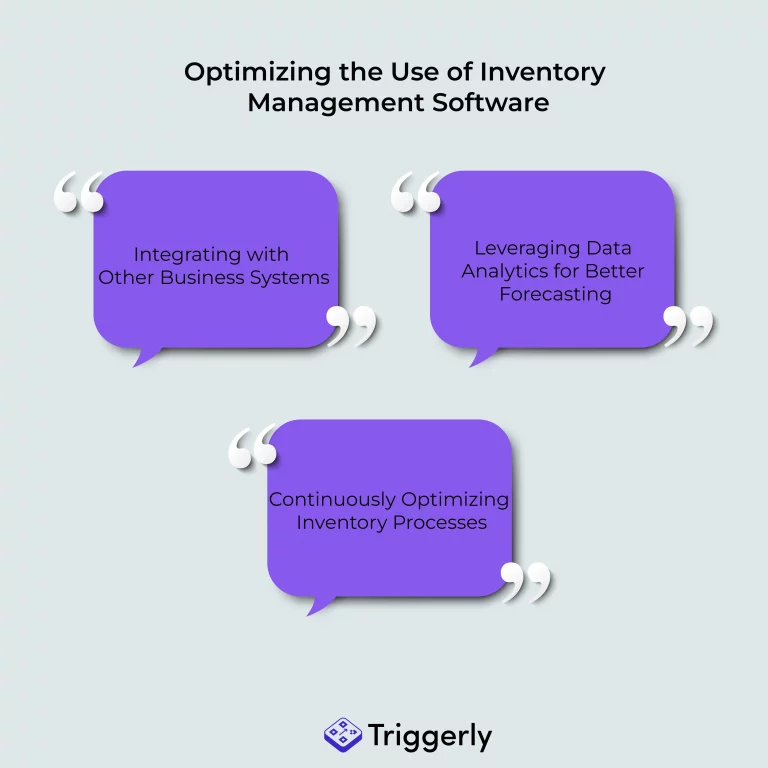
Integrating with Other Business Systems
Integration with other business systems, such as POS, accounting software, and CRM, provides a comprehensive view of operations. Seamless data flow across systems eliminates manual data entry and improves data accuracy. Integration enables businesses to make more informed decisions based on real-time information.
Leveraging Data Analytics for Better Forecasting
Inventory management software often incorporates robust reporting and analytics capabilities. By analyzing inventory data, businesses gain insights into sales trends, demand patterns, and supplier performance. These valuable insights enhance demand forecasting accuracy, optimize inventory levels, and inform purchasing decisions, ultimately reducing carrying costs and minimizing stockouts and overstocking.
Continuously Optimizing Inventory Processes
Implementing inventory management software is an ongoing process that requires continuous optimization. Regularly evaluate your inventory management processes, identify areas for improvement, and leverage the software’s features to automate and streamline operations. Reviewing inventory reports, monitoring key performance indicators (KPIs), and implementing continuous improvement strategies enhance efficiency and support growth.
FAQs
How can inventory management software benefit businesses of all sizes?
Inventory management software helps businesses optimize inventory levels, reduce carrying costs, prevent stockouts and overstocking, enhance operational efficiency, and improve customer satisfaction. By automating processes and providing real-time data, it enables businesses to make informed decisions, streamline operations, and maximize profitability.
What features should I prioritize when selecting inventory management software?
Consider real-time inventory tracking, demand forecasting, order management, barcode scanning, integration capabilities, reporting and analytics, and scalability. The software should meet your unique business needs and support your inventory management goals.
Is training required to use inventory management software effectively?
Yes, training is often necessary to use the software effectively. Training helps familiarize employees with the software’s features, navigate the interface, and perform essential tasks. Many providers offer training resources like tutorials, documentation, and webinars.
Can inventory management software help in reducing costs and increasing efficiency?
Yes, inventory management software can help reduce costs and increase efficiency. Accurate, real-time inventory data allows businesses to optimize stock levels, minimize carrying costs, and prevent stockouts and overstocking. Automated processes reduce manual errors and streamline operations, leading to improved efficiency.
Conclusion:
Investing in inventory management software offers numerous benefits, including streamlined operations, improved inventory tracking accuracy, and enhanced decision-making with real-time data. Additionally, it helps reduce costs, minimize stockouts and overstocking, and ensures timely deliveries, thereby enhancing customer satisfaction. Businesses should assess their needs, choose the right software solution, and train their team for successful implementation. By integrating systems, leveraging data analytics, and continuously optimizing processes, businesses can achieve efficient and effective inventory management, ultimately driving growth and profitability.
In this context, solutions like Triggerly can be particularly beneficial by integrating dynamic QR code tracking with inventory management platforms such as monday.com. This integration enhances real-time tracking and improves operational efficiency. To learn more about Triggerly and enhance your inventory management, click this.
Recent Posts
- How to use Smart Columns to identify key dates like holidays and label them automatically for better resource allocation on monday.com boards
- How to use Smart Columns to never miss an SLA target again on your monday board
- How to use Smart Columns for Casting advanced formulas into standard columns
- How to use Smart Columns to set regional numbers & dates formatting on your monday.com boards
- How to use Smart Columns to enforce conditional logic to monday.com board status columns
- How to use Smart Columns to validate any phone number stored in your monday.com phone board column
- How to use Smart Columns to enforce Mandatory Columns to any standard column on monday.com board
